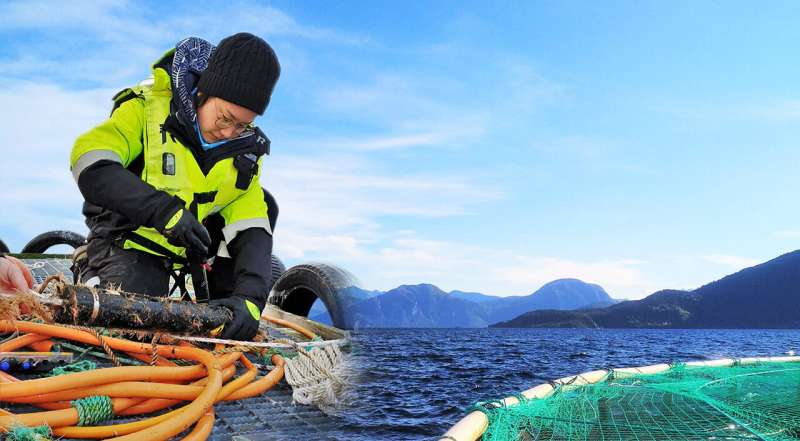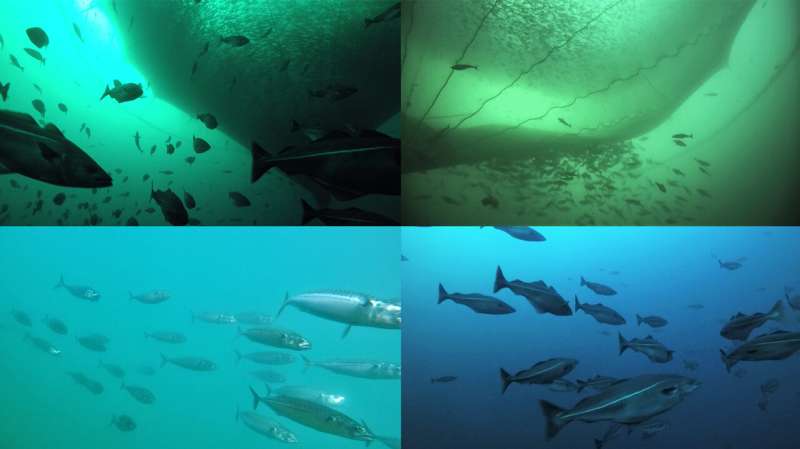Artificial intelligence makes it easier to study wild fish at salmon farm sites

Behavior is one indicator of fish welfare. If we have a good understanding of how fish behave in their normal state, as well as in unusual environmental conditions, we can potentially detect events early on that might harm farmed fish, like salmon, so we can prevent problems.
This kind of knowledge is also helpful to improve facility design and everyday operations at fish farms.
Environmental factors include both biotic (e.g., wild fish around sea cages, salmon lice, harmful algae) and abiotic (e.g. water current, light, dissolved oxygen) ones.
Better quality of life and economic benefit
In summer 2020, I started my Ph.D. at the Department of Biological Sciences Ålesund (IBA), where I'm studying the interaction between salmon group behavior and various environmental factors in coastal sea cages. This is a part of the InnoSEA project at IBA.
In my project, salmon behavior refers to their swimming patterns, schooling, jumping, avoiding certain depths or areas inside sea cages, and so on.
Improving conditions for farmed fish will eventually improve their quality of life, and will provide economic benefit for the industry.
Bigger scale than before
We conduct our research in commercial-scale sea cages that are approximately 40 meters in diameter, and 33 meters in depth. This size has not been that commonly used in previous studies on salmon behavior in aquaculture. Instead, researchers have used land-based tanks, or smaller-to-medium size experimental sea cages.
Findings from these previous studies are not necessarily applicable to salmon in large sea cages. Moreover, monitoring methods that have worked well for observing fish behavior in smaller-scale settings are not always suitable for larger-scale sea cages.
It is challenging to monitor salmon behavior in massive water volumes. Therefore, my research also focuses on establishing monitoring methods that can work well in large sea cages commonly used in Norwegian aquaculture today.

AI saves a lot of work
Coastal sea cages can attract huge aggregations of wild fish because uneaten feed pellets drift out from sea cages. Wild fish are one of the biological factors that might stress farmed salmon and change their behavioral patterns.
To investigate the interaction between wild fish and salmon inside sea cages, we started with developing a novel monitoring method for wild fish abundance analysis at aquaculture sites. In this method, we use an AI-based system that can autonomously quantify wild fish underwater.
We have tested the system with images taken at an aquaculture site where NTNU has a research license.
The results showed that the AI-based system can be a good alternative to manual quantification of wild fish. We can drastically reduce the human workload by using this AI-based system. This is a great advantage when we want to work with lots of footage.
Our plan is to conduct long-term monitoring of wild fish abundance and species composition at coastal aquaculture sites with our AI system.
From a broader perspective, this knowledge is valuable in terms of understanding the impacts of sea caged aquaculture on the ecosystem. The preliminary results of this study were presented at the Aquaculture Europe virtual conference held in April 2021.
Cross-disciplinary approach
In large-scale sea cages, our eyes can only detect salmon jumping at the water surface, or swimming in a thin upper layer of water. If we want to get a good overview of what is happening inside and around sea cages, it is essential to use various kind of equipment such as cameras, ROVs, sensors, and hydroacoustic tools.
This kind of equipment can generate massive amounts of complex data, so we need to use computer-based systems to process, visualize and analyze them.
It's not always easy to understand how the equipment and systems work and make good use of them in my own projects.
However, having a good, or at least a basic understanding of logic behind the tools and systems can add additional depth to my research. And it will be good for farmed salmon, too.
More information: InnoSEA project at IBA www.ntnu.edu/iba/innosea#/view/about
Provided by Norwegian University of Science and Technology





















